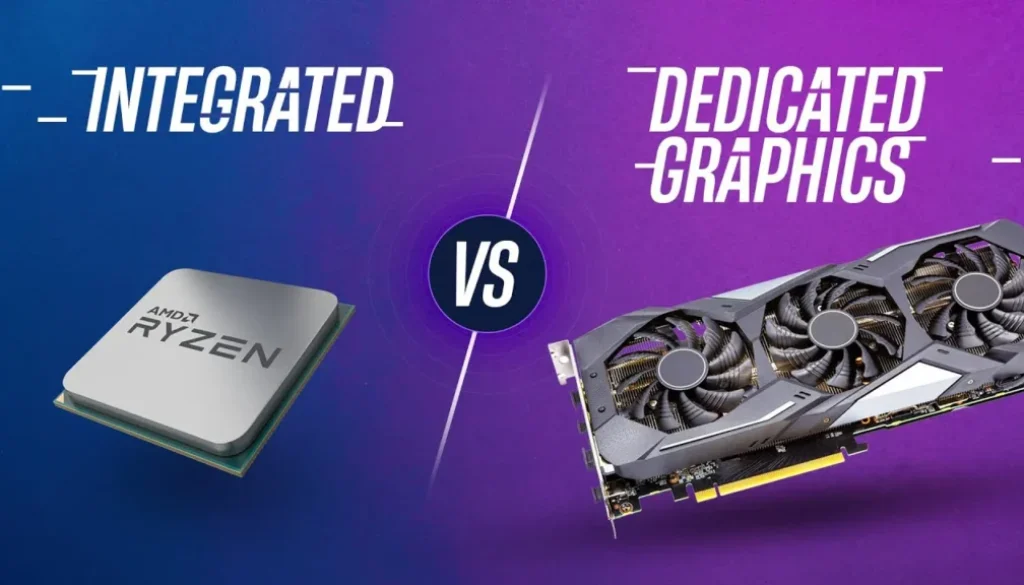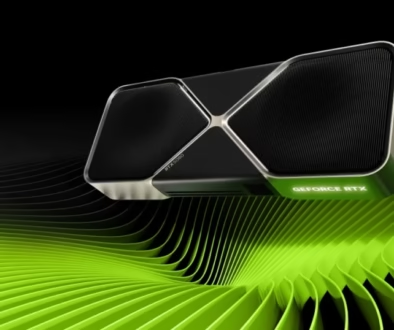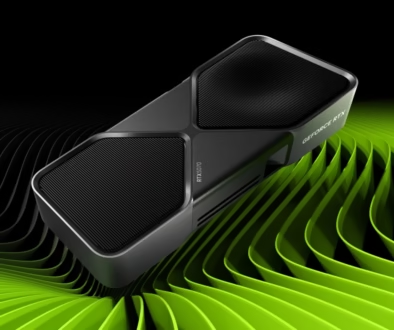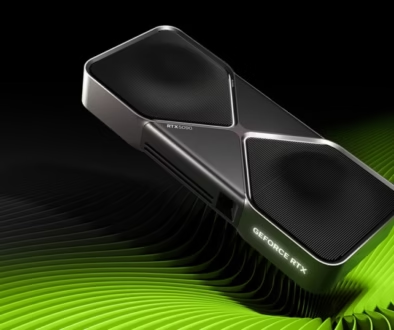Budget GPUs vs. Integrated Graphics: A Comprehensive Performance Comparison
When you purchase through links on our website, we may earn an affiliate commission.

Image Credit: ms.codes
Hey there, fellow tech enthusiasts! Did you know the gap between budget GPUs and integrated graphics is narrowing? It’s true! But here’s the million-dollar question: which one truly gives you the best bang for your buck in 2024? As someone who’s been tinkering with computer hardware for years, I’ve seen the landscape of graphics processing evolve dramatically. Trust me, I’ve made my fair share of mistakes when choosing between budget GPUs and integrated graphics!
Let me tell you, there’s nothing quite like the frustration of realizing you’ve spent money on a graphics card that barely outperforms the integrated graphics in your CPU. Conversely, I’ve also experienced the joy of finding that perfect budget GPU that breathes new life into an aging system. It’s a real rollercoaster, folks!
In this article, we’ll explore the world of budget GPUs and integrated graphics. We’ll compare their performance, discuss real-world use cases, and hopefully prevent you from making the same mistakes I did. Whether you’re a casual gamer, a content creator on a tight budget, or someone looking to understand the differences, I’ve got you covered.
So, grab your favorite beverage, get comfy, and let’s embark on this graphics adventure together. By the end, you’ll be armed with the knowledge to make the best choice for your computing needs and budget. Ready? Let’s dive in!
Understanding Budget GPUs and Integrated Graphics
Alright, let’s break this down in simple terms. Budget GPUs, or graphics processing units, are like the scrappy underdogs of the graphics world. They’re standalone cards you plug into your computer, offering decent performance without breaking the bank. I remember my first budget GPU – it was like strapping a tiny rocket to my PC!
On the other hand, integrated graphics are the Swiss Army knives of the computing world. They’re built right into your computer’s processor, which is convenient. No extra hardware is needed! But here’s the kicker – they used to be the laughingstock of the gaming community. I mean, I once tried to run a high-end game on integrated graphics and, well, let’s just say it wasn’t pretty.
The key difference? Budget GPUs have their own memory and processing power, while integrated graphics share your system’s resources. It’s like having your own apartment versus sharing a room with your sibling. Both can work, but one gives you a bit more freedom.
Integrated graphics have come a long way. They’re not just for spreadsheets anymore. But budget GPUs are still hanging tough, offering that extra oomph for folks who need it. It’s an honest David and Goliath situation out there!
Performance Comparison in Gaming
Let’s talk gaming, shall we? This is where things get interesting – and where I’ve had some of my biggest facepalm moments.
First up, 1080p gaming. Budget GPUs generally take the cake here. They can handle most modern games at 1080p with decent frame rates. With my trusty budget card, I’ve squeezed out 60+ FPS on medium settings in plenty of games. Integrated graphics? They’ve improved, but they still struggle with more demanding titles at 1080p.
Now, esports titles are a different beast. I swear these games are optimized to run on a potato. Both budget GPUs and modern integrated graphics can handle esports titles pretty well. I’ve had smooth experiences playing Rocket League and CS:GO on both.
But when it comes to AAA games, budget GPUs pull ahead. They can usually manage medium settings at 1080p, while integrated graphics might require you to dial things down to low. I learned this the hard way trying to play Cyberpunk 2077 on integrated graphics. Let’s just say it looked more like a slideshow than a game.
Frame rates and visual quality? Budget GPUs generally offer higher and more stable frame rates, plus the ability to crank up those pretty graphics settings. Integrated graphics have come a long way, but they still can’t match up in most cases.
Remember, your mileage may vary depending on the specific hardware and game. But if you’re serious about gaming, a budget GPU is still the way to go in 2024.
Content Creation and Productivity Performance
Video editing is a real test for any graphics solution. Budget GPUs generally have the edge here, especially regarding rendering times. I once tried to render a 10-minute 1080p video on integrated graphics – I swear I grew a beard waiting for it to finish! With a budget GPU, the same task was done in a fraction of the time. However, modern integrated graphics can hold their own for basic edits and cuts.
3D rendering? This is where budget GPUs flex their muscles. They’re designed to handle these intensive tasks, and it shows. Integrated graphics have improved but are still not ideal for serious 3D work. Trust me, I learned this the hard way when I tried to render a complex 3D scene on integrated graphics. I think my computer was about ready to stage a revolt!
The gap narrows for photo editing. These days, basic to moderate Photoshop tasks run fine on integrated graphics. But when you start layering complex effects or working with large files, a budget GPU can make a noticeable difference in responsiveness.
Multitasking is where things get interesting. Integrated graphics share system memory, impacting overall system performance when juggling multiple tasks. Budget GPUs, with their dedicated memory, can help keep things smooth. I’ve noticed this most when bouncing between a browser with multiple tabs, a word processor, and a photo editing program.
In 2024, the line between budget GPUs and integrated graphics for productivity tasks is blurrier than ever. For casual users, integrated graphics are often sufficient. However, a budget GPU can still offer a significant boost for those doing more intensive creative work.
Power Consumption and Heat Generation
Let’s discuss the hot topic of power consumption and heat generation. Trust me, you don’t want to ignore this – unless you fancy your computer doubling as a space heater!
Integrated graphics are the clear winners when it comes to energy efficiency. They’re like the hybrid cars of the graphics world – sipping power rather than guzzling it. I’ve noticed this most on laptops. I can work for hours with integrated graphics without frantically searching for a power outlet.
Budget GPUs, on the other hand, are a bit thirstier. They draw more power, which can impact your electricity bill if you use your computer a lot. It’s not a huge difference, but it’s noticeable. I learned this the hard way when I upgraded my old desktop with a budget GPU and suddenly found my room feeling much toastier!
Speaking of toasty, let’s talk heat. Integrated graphics produce less heat because they’re integrated into the CPU. It’s like they’re carpooling, sharing the cooling system. Budget GPUs generate more heat, so your computer’s cooling system must work harder. I once made the mistake of adding a budget GPU to a compact PC with poor airflow. Let’s just say it sounded like a jet engine trying to take off!
For laptops, this heat and power difference can significantly impact battery life. I can usually squeeze out a few more hours of use with integrated graphics. With a budget GPU? Let’s just say I’ve learned always to carry my charger.
In 2024, both options have become more efficient, but the fundamental difference remains. If power consumption and heat are major concerns for you, integrated graphics might be the way to go. But a budget GPU could be worth it if you need that extra graphical oomph and don’t mind a bit more heat and power draw.
Cost Analysis: Budget GPUs vs. Integrated Graphics
Alright, let’s talk money – because, at the end of the day, our wallets have a big say in our tech decisions. I’ve been on both sides of this fence, and let me tell you, it’s not as straightforward as you might think.
The initial investment is where integrated graphics shine. They’re already included with your CPU, so there’s no extra cost. It’s like getting a free side with your main course – who doesn’t love that? Budget GPUs, on the other hand, require an additional purchase. Prices vary, but you’re typically looking at $100-$200 for a decent budget GPU in 2024. I remember saving up for my first budget GPU – it took forever!
But here’s where it gets interesting – long-term value. A budget GPU can extend the life of your system, especially for gaming or content creation. I’ve breathed new life into old systems with a GPU upgrade. It’s like giving your computer a caffeine shot! Integrated graphics, while improving, may leave you wanting more as software demands increase.
Another factor is upgrade potential. With a budget GPU, you can usually upgrade to a better card. With integrated graphics, you’re pretty much stuck with what you’ve got unless you upgrade your whole CPU.
Don’t forget about the total system cost, though. If you’re building a new PC, choosing integrated graphics might allow you to allocate more budget to other components like a faster CPU or more RAM. It’s all about balance – like making the perfect sandwich with limited ingredients.
In 2024, the value proposition is closer than ever. For many users, modern integrated graphics provide enough performance to skip a discrete GPU altogether. But for others, the extra cost of a budget GPU pays off in terms of performance and longevity.
Remember, the best choice depends on your specific needs and budget. There’s no one-size-fits-all answer, but hopefully, this breakdown helps you make a more informed decision!
Compatibility and Installation
Let’s chat about compatibility and installation – or, as I like to call it, “the fun part” (detect my sarcasm?). This is where the rubber meets the road, and I’ve had some of my most educational experiences.
Integrated graphics are the ultimate plug-and-play solution. They’re already there, nestled cozily inside your CPU, ready to go. No additional installation required. It’s like ordering a pizza that magically appears in your living room – effortless! I remember the first time I realized my laptop had surprisingly capable integrated graphics. It was like discovering a hidden superpower!
Budget GPUs, on the other hand, require a bit more effort. You need to physically install the card, which can be daunting if you’re new to PC building. Trust me, I’ve been there. The first time I installed a GPU, I was sweating bullets! But it’s not rocket science – if you can plug in a toaster, you can install a GPU. Just remember to be gentle and maybe watch a tutorial first.
Driver support is crucial for both options. Integrated graphics drivers are usually bundled with system updates, making them easy to keep current. Budget GPUs require separate driver updates. I learned that keeping these up-to-date can make a big difference in performance and stability. Nothing like a driver update to fix that mysterious game crash!
System requirements are another consideration. Most systems can handle integrated graphics without breaking a sweat. But for budget GPUs, you must ensure your power supply can handle it and that you have an available PCIe slot. I once bought a GPU only to realize my old PC’s power supply couldn’t handle it. Oops!
In 2024, both options have become more user-friendly. Many budget GPUs are practically plug-and-play, and driver installation has become much smoother. But integrated graphics still win in terms of sheer simplicity. Remember, a little effort with a budget GPU can pay off in performance dividends!
Real-World Use Cases and Recommendations
Alright, let’s get down to brass tacks and talk about real-world scenarios. After all, that’s where the rubber meets the road, right? I’ve been in the trenches with both budget GPUs and integrated graphics, and I’ve got some war stories to share.
Budget GPUs shine in gaming scenarios. If you’re into AAA titles or want to future-proof your system, a budget GPU is your best bet. I remember upgrading to a budget GPU and suddenly being able to play games I couldn’t even dream of running before. It was like going from a bicycle to a motorcycle!
Integrated graphics, on the other hand, are perfect for everyday computing and light gaming. If you’re mostly browsing the web, working with office applications, and maybe indulging in casual games or eSports titles, integrated graphics have covered you.
Content creators, listen up! If you’re doing video editing, 3D rendering, or working with large Photoshop files, a budget GPU can make a world of difference. I once tried to render a complex After Effects project on integrated graphics. Let’s just say I had time to watch an entire season of my favorite show before it finished!
Here’s an interesting tidbit: Some systems, particularly AMD’s APUs, offer a hybrid solution. They have beefier integrated graphics that can hold their own in many scenarios.
My recommendations? If you’re a casual user who doesn’t game much, stick with integrated graphics. They’re cost-effective and hassle-free. If you’re a gamer or content creator on a budget, spring for that budget GPU. The performance boost is worth it.
Remember, there’s no one-size-fits-all solution. Assess your needs, consider your budget, and make the right choice for you. And don’t be afraid to experiment – sometimes, the best way to learn is by experimenting!


